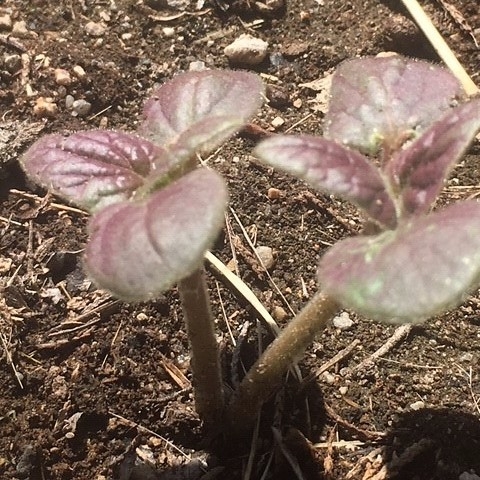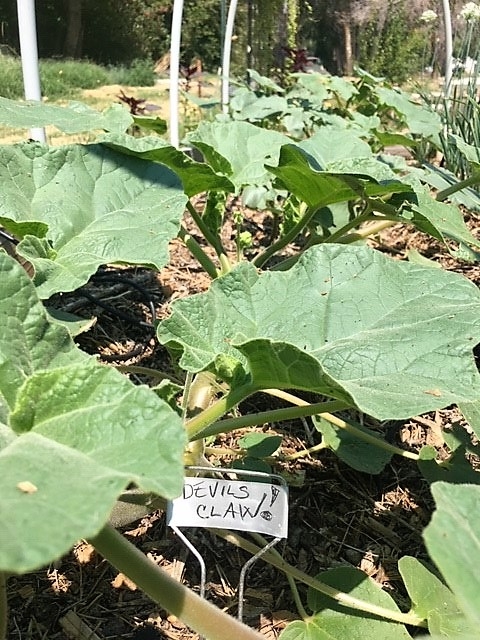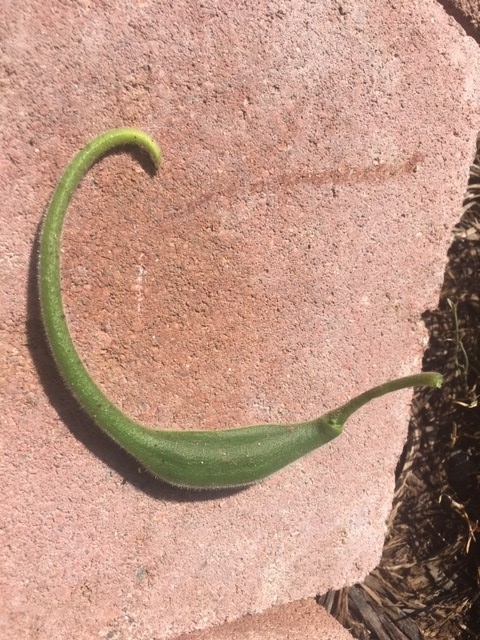Devils Claw is a plant native to the Southwest including the Owens Valley and can be found here and there. The plant has several other names like unicorn plant, double claw, or even red devils' claw. There are several Native American tribes that have used the dry black seed pods in their basketry including those in our area. The Papago tribe ate the pods and the Pima tribe ate the seeds, like pine nuts. So, the plant is diverse – either as a craft or food source.
Don't let the resourcefulness end there as it's been rumored to also be used in alternative medicine – things like taking a piece of the broken off claw and pressing it into the flesh and lighting it on fire for rheumatic pain – we definitely don't advise this! There are also species native to the continent of Africa that are used there for ointments, where the tubers and roots are highly valued and sold as supplement. Again this is not research-proven enough for recommendation.

As the plants began to grow, the leaves were large and fur like, with a light gloss to them. The stems were thick and spiny, and both seemed to have viscous goo on them. This is a bit sticky and has a faint odor. There is just a blush of purple to the stem and leaves.
The flowers started to appear mid-August in the high heat of summer. They had white corollas with a violet-red upper lip and a hint of tulip yellow in the center – very similar in design of an orchid, with a graceful white tongue hanging down from a burst of color.
As the seed pods started to develop -there was a slow start to their arrival - some were shorter and sharply hooked, while others were a more sweeping arc spinning off a larger firm pod.
The pods are edible, supposedly related to the flavor of okra so we began to harvest the green pods before they got too large and tough. I was also growing okra in my plot, because my husband is from Texas. We harvested enough devils claw and okra to do a pickling project. Both were made into refrigerator pickles with the same brine on the same day. They resided in the refrigerator for just over 4 weeks to allow for the brine to do what brines do. Then we proceeded to have a tasting. Visually, the devils claw made the brine turn a dark red color while the okra stayed the same with just a hint of green to it from the fruit flesh.

As the pods dried out, they shed their thick green fur and revealed a black prehistoric-looking shell, complete with T-rex spines, the hooks split in two to allow the access to the seed pod. The harvest of the seeds revealed various seed chambers in the pod and that required some prying and digging to release the bumpy, spiny seeds. The pods are not nearly as delicate as they appear, nor are the hooks. These dried hooks are rumored to be how the plant would spread by merely hooking themselves onto a passing woolly mammoth and dropping off seeds along the way as the pods split apart.
The summer is still waning into autumn and the temps are cooler at night and varying cool and warm days. The plants are slowly dying back, and the remaining seed pods are drying up to be harvested for seeds.
The continuation of this project will be next year when we are able to locate a large planting facility to see how these can be a stable, pest resistant, drought tolerant, multi-use food source. If you have or know of a place to suitable cultivate a larger parcel of devil's claw, please let us know, as we look forward to more culinary adventures with devil's claw, aka unicorn plant.
Reference: USDA NRCS Plant Guide Devil's Claw


